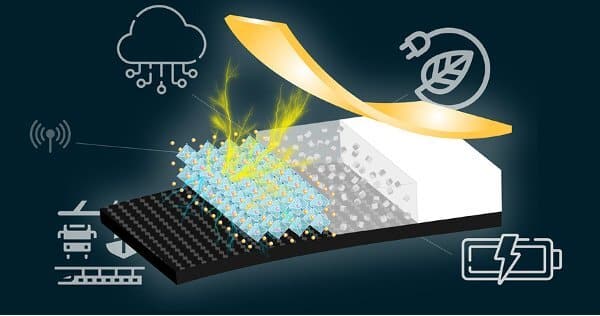Researchers at Tohoku University have merged piezoelectric composites with lightweight carbon fibre to create energy-generation devices.

Energy harvesting converts environmental energy into usable electricity, essential for a sustainable future. Internet of Things (IoT) devices, including everyday items like fridges and street lamps, require power for operation, posing challenges in remote locations or with numerous devices. Solar radiation, heat, and vibration have the potential to produce electrical power. Piezoelectric materials enable the harnessing of vibration-induced electricity through their ability to generate electrical charges under physical strain.
Researchers at Tohoku University have developed a novel energy-generation device by merging piezoelectric composites with carbon fibre-reinforced polymer (CFRP), a lightweight and robust material. This innovative device converts surrounding vibrations into electricity, offering a dependable and efficient power source for self-powered sensors. CFRP finds widespread application in aerospace, automotive, sports, and medical industries due to its lightweight nature and exceptional durability.
The researchers contemplated the possibility of utilising a piezoelectric vibration energy harvester (PVEH) that combines the durability of CFRP with a piezoelectric composite. They sought to determine if this approach could offer a more efficient and long-lasting method for energy harvesting. The team have created the device by blending potassium sodium niobate (KNN) nanoparticles with epoxy resin and combining it with CFRP. The CFRP material played a dual role as an electrode and a reinforcement substrate in the fabrication process.
The C-PVEH device exceeded expectations, as demonstrated through tests and simulations. It exhibited excellent durability, retaining high performance even after enduring over 100,000 bends. The device successfully stored the generated electricity and effectively powered LED lights. Furthermore, it surpassed other KNN-based polymer composites in terms of energy output density. The introduction of the C-PVEH is expected to drive advancements in self-powered IoT sensors, ultimately leading to the development of more energy-efficient IoT devices.
The researchers express excitement about the societal advantages offered by the C-PVEH device and the significant contributions made to the fields of energy harvesting and sensor technology. The combination of exceptional energy output density and robustness in the device opens doors for further exploration of composite materials for a wide range of applications.
Reference: Yaonan Yu et al, Energy harvesting and wireless communication by carbon fiber-reinforced polymer-enhanced piezoelectric nanocomposites, Nano Energy (2023). DOI: 10.1016/j.nanoen.2023.108588







